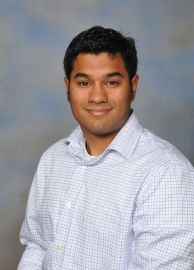Explicitly Filtered LES: Application to Separated Flows
Sanjeeb Bose, Stanford University

Boundary layer separation is a significant source of performance loss in many applications, including gas turbine engines and high-lift airfoils. Large-eddy simulation (LES) has emerged as a tractable method for the computation of these turbulent flows. The governing equations for LES are derived from the application of a low-pass filter to the Navier-Stokes equations, removing prohibitive resolution requirements imposed by small scales of motion, although in practice, this filtering operation is not formally defined. We investigate an alternative derivation of the LES equations where the filtering operator is unambiguously defined, known as explicitly filtered LES. We present two recent developments in the explicitly filtered LES framework with application to the prediction of separated flows: the use of estimates of subgrid-scale fluctuation energy for local mesh adaptation and the derivation of a fully dynamic wall model for high Reynolds number boundary layers. LES of an asymmetric diffuser (performed on a Blue Gene/L at Lawrence Livermore National Laboratory and a Blue Gene/P at Argonne National Laboratory) and an airfoil at near-stall conditions (performed on Mapache, Los Alamos National Laboratory) will be shown. Results obtained from both of these cases agree well with experimental measurements demonstrating the predictive capabilities of these simulations.
Abstract Author(s): S.T. Bose, P. Moin, and F. Ham


